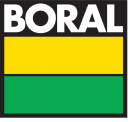Keeping asphalt in good condition protects your asset, improves safety and reduces lifecycle costs. Below you will find answers to common questions about bitumen repair, asphalt patching, crack filling and preventative maintenance, written to help facility managers, councils and homeowners make informed decisions.
Which defects can be repaired and which need resurfacing?
Minor issues such as small cracks, potholes and localised ravel can usually be repaired in place. If defects are widespread, include deep rutting, structural base failure or extensive oxidation, resurfacing or rehabilitation may be more cost‑effective than isolated repairs. A Boral representative can help you assess whether a patch, overlay or full reconstruction is appropriate for your site and traffic loads.
What is the difference between hot mix and cold mix for repairs?
Hot mix asphalt is produced at temperature and compacted while hot. It provides a long‑lasting repair for permanent patches, reinstatements and high‑traffic areas. Cold mix asphalt is a ready‑to‑use product for temporary or low‑traffic repairs and for wet or cooler conditions when hot works are not practical. Use cold mix to make a site safe quickly, then plan a permanent hot mix repair when conditions allow.
When should I use an asphalt patch versus a crack filler?
Crack fillers are used when there is a continuous crack but no loss of surrounding material. Sealing the crack helps prevent water ingress that can weaken the base. An asphalt patch is used when material has broken away, such as a pothole, utility trench or edge break. Patching restores the surface profile and load distribution where material is missing.
How do I prepare a pothole for patching?
Preparation is critical for durability. Square up the sides to sound material, clean out debris and moisture, and ensure a firm base. Apply tack coat to the vertical faces where specified, place the asphalt in lifts, and compact thoroughly from the edges to the centre to achieve tight joints and a flush finish. Good preparation and compaction are the difference between a short‑term fix and a lasting repair.
Can I DIY bitumen repairs or should I engage a contractor?
Small low‑risk areas such as residential driveways can often be repaired with cold mix following the product instructions. For roads, car parks, heavy vehicle areas and any repair that may affect drainage, levels or traffic safety, you should engage a qualified contractor. Correct traffic management, compaction equipment and temperature control are essential for performance.
How often should I inspect and maintain asphalt?
Plan visual inspections at least twice a year and after extreme weather. Promptly seal cracks as they appear and patch potholes before they grow. Consider surface treatments, such as protective coatings in high UV or high‑skid areas, to extend service life. Proactive maintenance costs less than reactive reconstruction.
What causes potholes and cracks to come back?
Recurring defects are usually linked to poor drainage, insufficient base support, inadequate edge confinement, or traffic loading that exceeds the original design. If recurring issues are found, investigate subgrade and drainage, not just the surface. A design review can prevent repeat failures.
Is recycled asphalt suitable for repairs?
Recycled Asphalt Pavement can be incorporated into hot mix for many applications, helping to reduce environmental impact while maintaining performance. Suitability depends on specification, location and traffic. Ask Boral for mix design advice that meets your project and sustainability goals.
How soon can traffic return after repairs?
Cold mix patches can typically be trafficked soon after compaction. Hot mix repairs are usually opened once the material has cooled and achieved initial stability. Timing depends on layer thickness, ambient conditions and traffic type. Your contractor will advise safe reopening times on site.
Does sealing help my driveway or car park last longer?
Crack sealing is one of the most effective ways to extend pavement life because it limits water penetration into the base. Surface coatings can improve colour, UV resistance and skid properties in the right applications. The best treatment depends on condition, exposure and expected traffic.
Next Steps with Boral
If you would like help diagnosing pavement issues or choosing the right repair mix, our team can support you with technical advice and supply. Call 1300 267 255 or click Request a Quote to get started.


